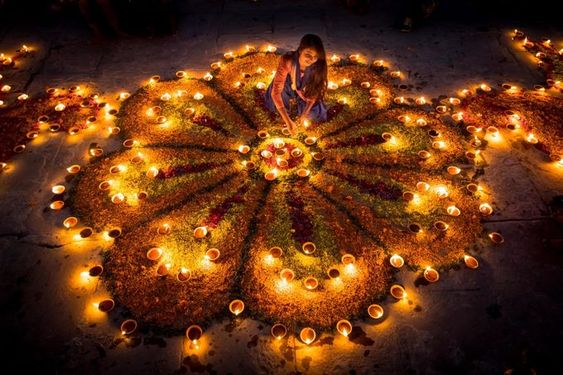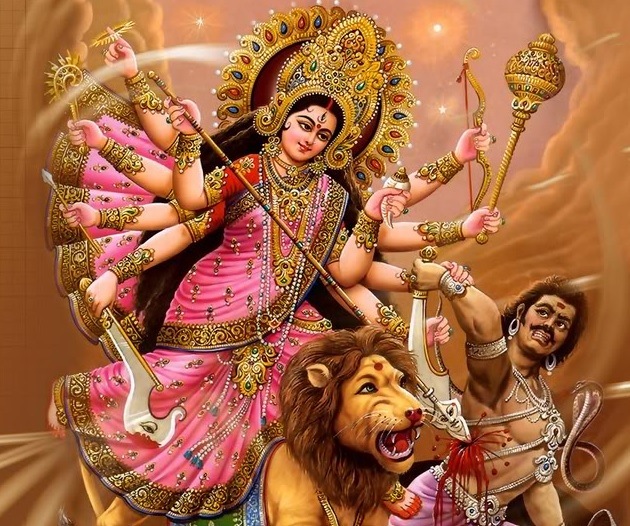Maha Shivratri
Millions of Hindus around the world participate in the annual celebration of Maha Shivratri, a holy holiday dedicated to Lord Shiva. “Maha Shivratri” means “Great Night of Shiva” in Sanskrit, and it is celebrated on the fourteenth day of the Hindu month of Phalgun (which occurs during the months of February and March). On this day, believers partake in a wide range of rituals. They worship the Shiva Lingam at Shiva temples and pay homage to Lord Shiva by fasting, meditation, and the offering of flowers and milk. Many people choose to forego sleep in order to witness what they believe to be Lord Shiva’s cosmic dance of creation and destruction.
The celebration has great religious significance because of its focus on enlightenment and the rejection of ignorance. In addition to being a time of celebration of Shiva’s divine force, it is also a time of unity as people of all walks of life join together to participate. A cultural and social celebration that encourages spirituality, community, and harmony, Maha Shivratri is more than just a religious holiday. This Hindu celebration, known as Maha Shivratri or the “Great Night of Shiva,” has deep spiritual and mythological roots. In India and other nations with sizable Hindu populations, this festival is celebrated with tremendous enthusiasm since it marks the anniversary of the wedding of Lord Shiva and Goddess Parvati.
The Night of Lord Shiva Maha Shivratri 2025
Devotees begin their day with a ritual bath and fasting, with some going so far as to refrain from even water. Self-discipline and cleanliness are represented by the fast. Long lines of devotees can be seen outside of Shiva temples, where they will present Bilva leaves, water, and milk to the Shiva Lingam in exchange for the god’s favour. The all-night vigil is a fascinating part of Maha Shivratri. Christians spend the night praying and singing hymns of worship. This watch symbolises a quest for knowledge and promotes quiet reflection. The festival brings together individuals of all faiths in a common celebration of dedication and peace.
Cultural celebrations include dance, music, and elaborate processions take place across India on this day as well. On Maha Shivratri, worshippers honour Lord Shiva as the destroyer of evil, the converter of energy, and the source of divine power that leads his devoted followers to enlightenment.
Significance of Maha Shivratri
The Hindu festival of Maha Shivaratri is extremely important because it honours Lord Shiva, one of the most revered deities in Hinduism. This holy celebration represents the ultimate victory of good over evil, both in the material world and in the hearts and minds of individual humans. Fasting, meditation, and the traditional bathing of the Shiva Lingam are just a few of the practises that devotees partake in during this time as they seek blessings, inner purification, and spiritual development.
For many, Maha Shivaratri is the beginning of a life-changing spiritual adventure that leads them closer to the divine, helps them come into their own, and ultimately brings them peace. A reminder of the value of commitment, self-control, and the quest for enlightenment is provided by this day. It’s not just a religious festival; it also helps people connect with their innermost selves and the timeless and transcendental worlds.
History of Maha Shivratri
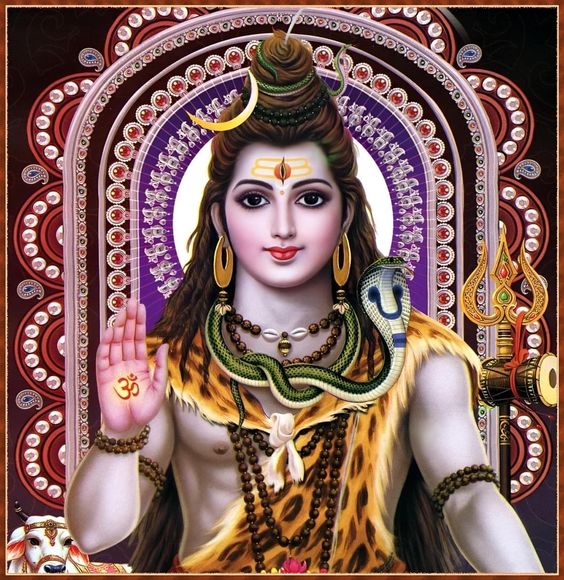
The Hindu holiday of Maha Shivratri is observed with tremendous solemnity and devotion all over the Indian subcontinent. This important festival has profound historical and spiritual origins, and it is celebrated on the 14th day of the dark fortnight in the Hindu lunar calendar month of Phalguna. Ancient Hindu texts, especially the Puranas, provide a historical context for Maha Shivratri. These traditions explain that on Maha Shivratri, one of the most important days in Hinduism, Lord Shiva initially appeared as the Lingam, an emblem of the divine. In Hindu mythology, this celestial manifestation is said to have occurred on the night of Maha Shivratri.
There are several different rituals and observances that devotees perform during Maha Shivratri. Fasting is widely practised because of its ability to cleanse both the body and the psyche. An all-night vigil is another way that believers celebrate the victory of wisdom over folly. The giving of Bilva leaves to Lord Shiva is also an important part of Maha Shivratri since it is thought to gain His favour.
The air is filled with the chanting of ancient mantras, most notably “Om Namah Shivaya,” as worshippers seek enlightenment and calmness on a deeper level. In the ceremony of ‘Abhishekam,’ the Shiva Lingam is washed and anointed with milk, water, honey, and yoghurt to symbolise the cleaning and anointing of the formless Supreme Being it represents. There is much more to Maha Shivratri than merely a religious celebration. It represents the victory of good over evil, of knowledge over ignorance, and the reawakening of the human spirit. It is the hope of devotees that the practises they adopt would help them achieve enlightenment, strengthen their bonds with their inner selves, and clear away any obscuring ignorance.
In conclusion, Maha Shivratri is a festival that unites countless believers in the same goal: the development of their inner spirituality. It’s a moving reminder of the strength of faith and introspection in the face of adversity, and a tribute to Hinduism’s long and illustrious history.
Date and Timing of Maha Shivratri
Maha Shivaratri falls on the 13th or 14th day of the dark fortnight in the Hindu month of Phalguna, which usually corresponds to February or March in the Gregorian calendar. It is celebrated on the moonless night, making it an auspicious time for Lord Shiva’s worship.
Rituals and Traditions of Maha Shivratri
- Fasting and Vigil : Devotees, in their pursuit of spiritual elevation, engage in a day-long fast and an all-night vigil on Maha Shivratri. The fast is observed as a means to purify the body and mind, while the vigil symbolizes staying awake to ward off ignorance and darkness.
- Offering Bilva Leaves : One of the most revered offerings to Lord Shiva on this day is the Bilva leaf. It is believed that offering Bilva leaves with devotion pleases the Lord and grants his blessings.
- Chanting Mantras : The reverberation of sacred mantras fills the air as devotees chant ‘Om Namah Shivaya’ with utmost devotion. This powerful mantra is believed to invoke Lord Shiva’s divine presence.
- Abhishekam : The Shiva Lingam, representing the formless Supreme Being, is bathed with offerings such as milk, water, honey, and yogurt, in a ritual known as ‘Abhishekam.’ This signifies purification and anointment.
- Visiting Shiva Temples : Many devotees visit Shiva temples to seek the blessings of Lord Shiva. Temples are often adorned with flowers and decorations, and special prayers and ceremonies are held throughout the night.
Spiritual Significance of Maha Shivratri
Maha Shivratri is one of the most important festivals in Hinduism, but its spiritual significance goes far beyond its religious observance. This holy event has significant significance for believers and inquirers of the divine. The festival of Maha Shivratri represents the triumph of good over evil. Devotees stay up all night in a symbolic triumph of spiritual light over the darkness of ignorance. It’s a striking reminder of the continuing battle between good and evil on the road of life, and how good always wins out in the end.
The vigil is held during the night’s darkest hours to symbolise the belief that good will ultimately triumph over evil, both in the physical world and in one’s own soul. The spiritual reawakening is also celebrated throughout this event. On Maha Shivratri, believers engage in serious spiritual practices like meditation, prayer, and chanting in an effort to strengthen their connection to the divine. Introspection, the pursuit of enlightenment, and the attainment of a state of profound calm and inner serenity are encouraged at this period. For many, Maha Shivratri is a time of profound introspection and self-discovery, a kind of spiritual reawakening. In addition, the festival of Maha Shivratri stresses the superiority of education over ignorance.
The celebration, according to its adherents, is about more than just performing rites and ceremonies; it’s also about seeking and valuing knowledge. In doing so, the event serves as a lighthouse, guiding people away from the mists of ignorance that too frequently obscure their awareness. The spiritual significance of Maha Shivratri rests on the ideal that one should seek out knowledge and enlightenment.
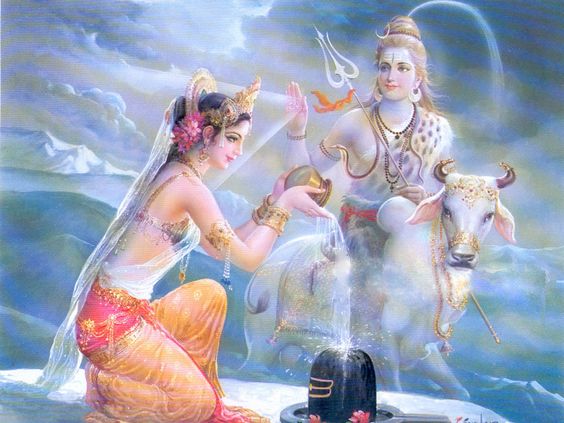
In conclusion, Maha Shivratri is more than just the usual celebrations. It’s a party honouring the struggle between good and evil throughout all of time, the triumph of light over darkness, and the reawakening of the spirit. It inspires people to pursue learning and enlightenment in the hopes of achieving personal fulfilment. For spiritual enthusiasts and explorers, Maha Shivratri is a doorway to enlightenment and an opportunity to learn more about oneself and the cosmos.
Celebrations Across India for Maha Shivratri
All around India, people celebrate Maha Shivratri with joy and awe. The holiday is celebrated in many different ways from place to place, but it always has deep spiritual importance. Let’s have a look at the various Maha Shivratri celebrations held around India.
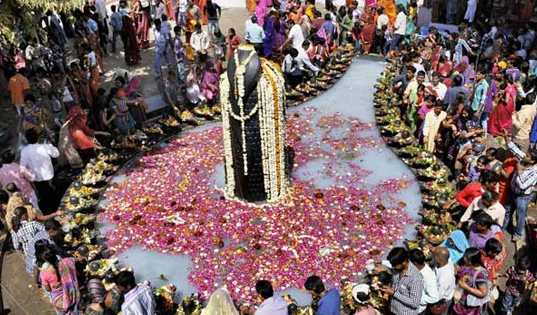
Varanasi: One of the largest festivals of Maha Shivratri takes place in Varanasi, India’s spiritual capital. Celebrations revolve around the Kashi Vishwanath Temple, which is devoted to Shiva. Along the ghats of the sacred river Ganges, the city is illuminated by hundreds of oil lamps, providing a breathtaking scene. Pilgrims travel from all around India to attend the huge celebration in Varanasi, where they can pray and behold the spectacle.
Mandi, Himachal Pradesh: This beautiful town is home to the annual International Shivratri Fair, which is celebrated for an entire week and attracts visitors from all over the world. The town comes to life with traditional dances and ceremonies. Deities from local temples take part in a colourful procession throughout the festival, transported in elaborately decorated palanquins. This festival combines religious observance with regional traditions.
The Pashupatinath Temple in Kathmandu, Nepal: The Pashupatinath Temple in Kathmandu is the heart of the Maha Shivratri celebration in Nepal. People come from all around Nepal and India to worship at this historic temple. The premises of the temple are decked out in vibrant decorations, and the air is heavy with religious fervour.
Gujarat: Fourthly, the western state of Gujarat has some of the most enthusiastic Maha Shivratri celebrations. The famed Somnath Temple is one of the twelve Jyotirlingas where worshippers go to honour Lord Shiva. Every moment of the day and night is filled with rituals, abhishekams (the ritual bathing of the deity), and cultural events.
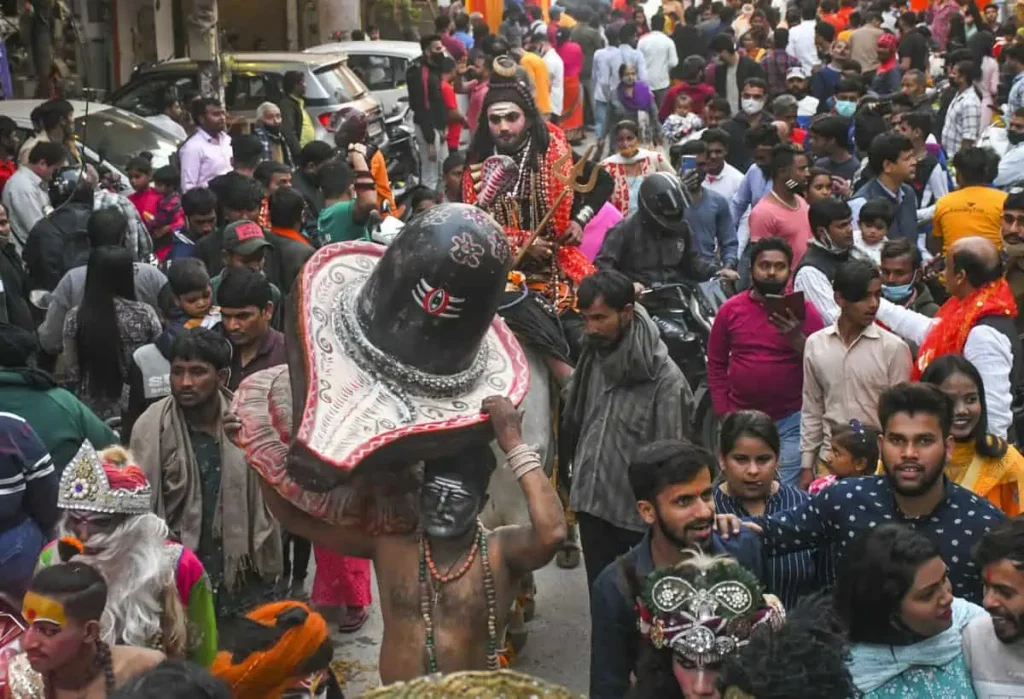
Jammu and Kashmir : India’s most northern state, celebrates Maha Shivratri with a special blend of fervour and simplicity. Worshippers in this area pay visits to Shiva temples all around the place, where they keep a solemn vigil throughout the night.
Andhra Pradesh and Telangana : Many people from these two southern states travel to Srisailam to worship at the Bhramaramba Mallikarjuna Swamy Temple. Those who worship Lord Shiva do so with particular prayers and rituals. The temple grounds are illuminated by stunning decorations.
Conclusion
The spiritual and cultural significance of the celebration of Maha Shivratri cannot be overstated. It symbolises the never-ending struggle between good and evil, light and darkness, and the strength of wisdom and commitment over time. In honour of this joyous occasion, let us all recite the mantra “Om Namah Shivaya,” which is said in reverence to Lord Shiva, and work towards greater self-awareness, tranquillity, and enlightenment. Maha Shivaratri 2024
To see how people celebrate Maha Shivratri Click on this link -> https://youtu.be/hIEgNUggBnk?si=yoTXOa4ER5T_0TiE
Some Famous Quotes on Maha Shivratri 2024
“Om Namah Shivaya” – इस पवित्र मंत्र को भगवान शिव के भक्त उनका आशीर्वाद पाने के लिए जपते हैं, और यह महाशिवरात्री के दौरान अक्सर बार-बार बोला जाता है।
“The mind is everything. What you think you become.” – यह बुद्ध के इस विचार से मानव चिंतन की शक्ति को दर्शाता है, जिसका महत्व महाशिवरात्री के महत्वपूर्ण विचारों में होता है, जहाँ आत्मा के स्वरूप का अंधर खोजा जाता है।
“The soul loves to meditate, for in contact with the Spirit lies its greatest joy.” – परमहंस योगानंद के शब्द ध्यान के महत्व को उजागर करते हैं, जो महाशिवरात्री के केंद्रीय अभ्यास का महत्वपूर्ण हिस्सा होता है।
“Shiva is Chidambaram, the body is the city of Chidambaram, and the soul, in the heart, is the deity in the temple.” – सेंट तिरुवल्लुवर ने आत्मा के अंदर के मंदिर के देवता के रूप में अपने शब्दों में खूबसूरती से चिदंबरम का अंदरमन किया है।
“In the fire of Shiva, all negativities are burnt to ashes.” – शिव के अग्नि में सभी नकारात्मकताओं को राख में बदल दिया जाता है, इस विचार को दर्शाने वाला एक कहावत।
“The dance of Shiva is the dance of the Universe – the ceaseless creation, preservation, and destruction that is the essence of all existence.” – आनंद कुमारस्वामी के शब्द भगवान शिव के ब्रह्मांड के नृत्य को दर्शाते हैं, जो महाशिवरात्री पर मनाया जाता है।

